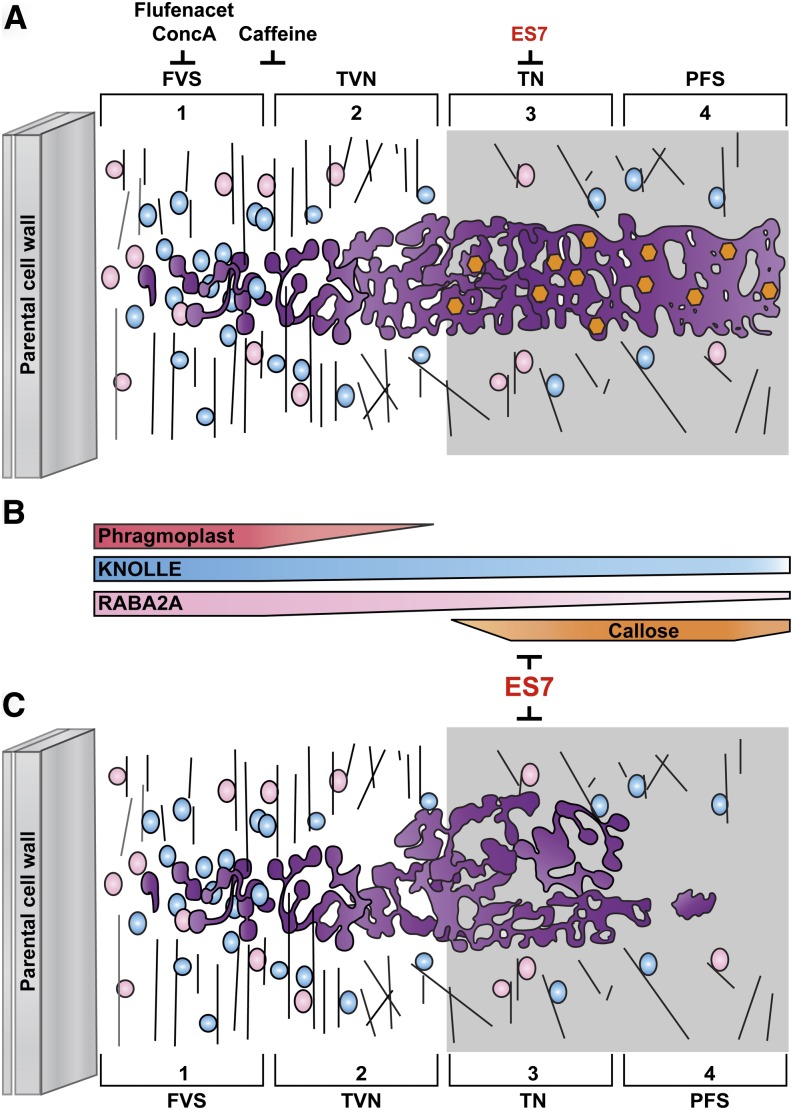Figure 9.
Proposed model of cell plate maturation and its inhibition by small molecules, including ES7. A, Cell plate formation steps and its temporal inhibition by small molecules during cell plate formation steps. In the early stage of cell plate formation (FVS), RABA2A (pink) and KNOLLE (blue) vesicles with guidance from the phragmoplast vigorously accumulate at the center of the dividing cells. While vesicles gathered at the CPAM change their structure by fusion and fission (purple tubular membrane structures in TVN), callose (orange hexagons) starts depositing at the maturing cell plate in the TN stage to support membrane structures and facilitate the transition to PFS. ES7 specifically inhibits callose synthase activity at this stage, preventing cell plate maturation. Flufenacet and ConcA affect the FVS cell plate stage, while caffeine affects the FVS-to-TVN transition stage. Corresponding references and new findings in this study are listed in Supplemental Table S1. B, Differential accumulation of cellular components during cell plate maturation. RABA2A association with the membrane is significantly reduced, while the KNOLLE levels remain constant. ES7 does have a unique mode of action, preventing further maturation steps after TVN by the inhibition of callose accumulation at the cell plate, differing markedly from that of ConcA, flufenacet, and caffeine, which have a broad range of inhibition in cellular mechanisms. C, Proposed model of an ES7-treated cell plate based on our confocal microscopy observations. Cell plate maturation after TVN is prevented by ES7 due to the inhibition of callose deposition. KNOLLE often accumulated in ectopic aggregates upon ES7 treatment, possibly due to excessive deposition of tubular membrane material.

